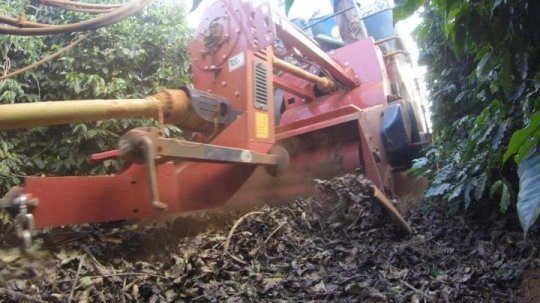[ad_1]
Coffee is one of Brazil’s biggest crops. Brazil’s favorable climate helps coffee beans ripen and be ready for picking during a concentrated period of weeks. This makes mechanical harvesting an economically reasonable choice.
So much mechanization, however, comes with its challenges. Tiago de Oliveira Tavares is an agronomist at Sao Paulo State University in Brazil. He and his colleagues perked up at the opportunity to brew some coffee-growing solutions.
Up to 20% of coffee berries fall to the ground. This can be due to the mechanical harvesting process as well as other causes, including rain, wind, disease, and pests. This “ground coffee” is retrieved through a process of mechanical sweeping and picking.
But the machinery is heavy. Over time it compresses the soil, interfering with the trees’ root growth and their ultimate levels of production. In response, growers use a process called subsoiling to break up this hard soil. A long blade is pulled behind a tractor. It breaks up the soil very effectively but leaves an uneven soil surface behind.
Uneven ground means more ripe coffee berries are left behind by the machines, and more dirt and stones are picked up. Growers use additional soil management techniques to smooth the soil. For example, a harrow is a tool with teeth or discs that break up the big clods of dirt that remain after subsoiling. The soil is left softer and fluffier. A crusher pulverizes the soil and any plant matter, leaving the ground smooth and bare.
Which technique, or combination of techniques, does the best, most cost-effective job of improving sweeping and picking efficiency?
Here’s where Tavares’ team steps up to the coffee bar. The researchers had four options on their soil management menu:
- Control group with no soil management. This provides the best conditions for the machinery but is not a good soil management practice.
- Subsoiler followed by harrow. The researchers found the harrow treatment led to the highest losses. They concluded that subsoiling plus harrowing was an economically undesirable management practice.
- Subsoiler, harrow, and crusher. This treatment was not consistently effective. The extra step also increased operational costs, making it a less desirable option.
- Subsoiler followed by crusher: Tavares and his team determined that the crusher treatment was the best option to reduce the losses of mechanical coffee harvesting. This method had the lowest losses and best operational quality.
Leaving fallen coffee berries on the ground is not a good option. For one thing, the berries provide a breeding ground for the coffee borer, which is the coffee crop’s second most common pest. Just as important, the sale value of the fallen coffee makes it economically worthwhile to recover as much as possible.
“This study is important because through this research coffee producers can improve the management of their coffee plantations,” Tavares said. “They can reduce losses and increase their profit while taking good care of the soil.”
That’s a coffee blend with just the right amount of earthiness and a great finish.
Story Source:
Materials provided by American Society of Agronomy. Note: Content may be edited for style and length.
[ad_2]















